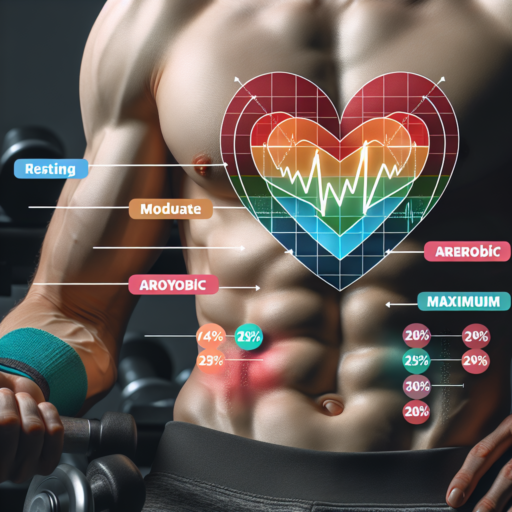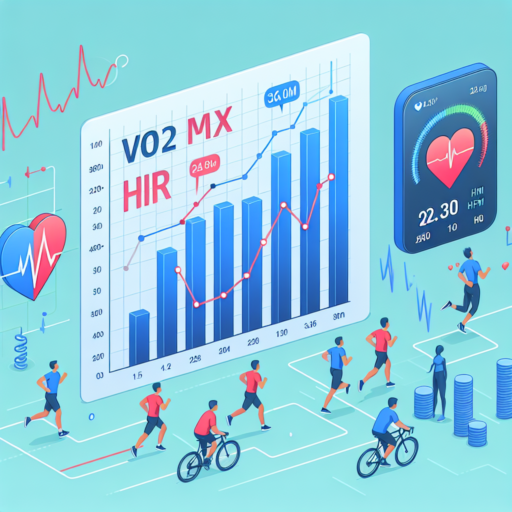Understanding Heart Rate Variability (HRV): What You Need to Know
Heart Rate Variability (HRV) is a critical measure of the variation in time between each heartbeat. This metric is an indicator of the autonomic nervous system’s (ANS) role in the body, revealing insights into our physical fitness, stress levels, and overall well-being. Understanding HRV can empower individuals to make informed decisions about their health and lifestyle choices.
HRV is often misconceived as a constant value, but in reality, a higher variability is a sign of a healthy heart. A healthy heart does not tick with the regularity of a metronome; rather, it adjusts its rhythm based on the body’s needs at any given moment. Factors such as stress, physical activity, and even sleep patterns can influence your HRV, making it a dynamic and responsive measure of wellness.
To effectively monitor and understand your HRV, several tools and devices are available, ranging from wearable technology to specialized apps. These tools provide valuable data that can help gauge your fitness levels, predict recovery times, and even signal potential health issues before they become serious. By regularly tracking this crucial biometric, you can take proactive steps toward optimizing your health and enhancing your body’s resilience.
The Importance of a Healthy HRV Range for Overall Wellness
Understanding the significance of a healthy Heart Rate Variability (HRV) range is pivotal in the pursuit of overall wellness. HRV, the variation in time between each heartbeat, serves as a critical indicator of an individual’s autonomic nervous system function. It is paramount since it reflects how well the body can manage stress, recover from exercise, and maintain a balance between the sympathetic «fight or flight» and the parasympathetic «rest and digest» responses. A healthy HRV range not only signifies a resilient and adaptive cardiovascular system but also plays a vital role in predicting general health and longevity.
One of the key benefits of maintaining a healthy HRV range is its association with improved stress management. High HRV levels are indicative of a strong variability between heartbeats, signaling a high capacity to adapt to stress. Conversely, a low HRV suggests a weaker ability to handle stress, potentially leading to various health issues over time, including heart diseases, anxiety, and depression. Therefore, monitoring and working towards a healthier HRV can empower individuals to better manage stress, enhancing their overall quality of life.
Moreover, a healthy HRV is essential for optimal physical performance and recovery. Athletes and fitness enthusiasts often rely on HRV measurements to tailor their training programs, ensuring they are neither overtraining nor undertraining. By understanding and maintaining an optimal HRV range, individuals can maximize their physical performance while minimizing the risk of injury or burnout. This balance is crucial for long-term fitness and well-being, further underscoring the broad relevance of a healthy HRV across different aspects of wellness.
How to Interpret Your HRV Scores: A Guide for Beginners
Understanding your Heart Rate Variability (HRV) scores can seem daunting at first, but it’s a crucial metric for gauging your overall health and wellness. Essentially, HRV measures the time variation between each heartbeat, indicating your autonomic nervous system’s efficiency. A higher HRV score suggests a robust and resilient system, capable of adapting to stress and maintaining balance. Conversely, lower HRV scores can point towards stress, fatigue, or under-recovery. As a beginner, learning to interpret these scores can empower you to make informed decisions about your health and fitness routines.
Deciphering HRV Score Ranges
The first step in interpreting your HRV scores is to understand the typical ranges. While these can vary significantly due to individual physiology and age factors, general benchmarks can guide you. For instance, an HRV score above 60 milliseconds (ms) is often considered good for adults, indicating a strong variability that suggests a healthy, responsive cardiovascular system. Scores between 20-50 ms might signal a need for lifestyle adjustments or stress management practices. However, it’s imperative to compare your scores against your personal baseline rather than against universal standards, as personal health history plays a crucial role in these metrics.
Noticing Patterns Over Time
Another critical aspect of interpreting your HRV scores is observing how they change over time. Fluctuations in HRV are normal, but consistent trends can offer profound insights into your wellbeing. For example, a steady decrease in HRV over several weeks or months may indicate mounting stress or potential health issues. On the other hand, observing an increase in your average HRV scores could signify improvements in your fitness level, recovery capacity, and overall health. Incorporating activities like mindfulness, meditation, and regular exercise can positively influence your HRV scores, reinforcing the connection between a well-balanced lifestyle and heart health.
Tips to Improve and Maintain a Healthy HRV Range
Understanding and managing your Heart Rate Variability (HRV) is pivotal for assessing stress, overall health, and fitness levels. A higher HRV often indicates better cardiovascular fitness and stress resilience. Here are essential ways to enhance and maintain an optimal HRV score:
Regular Exercise
Engaging in consistent, varied physical activities is crucial for improving your HRV. Aerobic exercises, strength training, and even yoga can significantly boost your cardiovascular system’s efficiency. It’s important to balance intensity and recovery periods to avoid overtraining, which might negatively affect your HRV.
Stress Management Techniques
High levels of stress have a direct, negative impact on your HRV by keeping your body in a constant state of fight or flight. Incorporating stress-reduction techniques such as meditation, deep breathing exercises, and mindfulness can help in calming the nervous system, thereby improving HRV over time.
Optimizing Sleep
Quality sleep is foundational for a healthy HRV range. Establishing a regular sleep schedule, creating a restful environment, and avoiding stimulants before bedtime can greatly enhance your sleep quality. Additionally, monitoring sleep patterns and making adjustments based on your HRV data can offer insights into the restorative power of your sleep.
Factors That Influence Your HRV: From Lifestyle to Genetics
When discussing heart rate variability (HRV), understanding the myriad factors that can influence it is essential. HRV, a marker of autonomic nervous system balance and resilience, is swayed by a variety of internal and external elements. Among these, lifestyle choices and genetic predispositions stand out as substantial influencers.
Lifestyle Impact on HRV
Lifestyle choices play a pivotal role in shaping one’s HRV. Factors such as physical activity level, stress management practices, and sleep quality significantly affect HRV metrics. Regular physical activity, for instance, typically enhances HRV, indicating greater autonomic nervous system balance and cardiovascular health. Conversely, persistent stress and poor sleep patterns can degrade HRV, signaling reduced resilience and increased vulnerability to stress-related ailments.
Genetic Contributions to HRV
Aside from lifestyle, genetic factors contribute significantly to individual differences in HRV. Research reveals that genetics can dictate the baseline level of one’s HRV, affecting how flexible or rigid one’s autonomic responses are. This genetic predisposition means that while lifestyle modifications can influence HRV, there’s a foundational level determined by one’s genetic makeup, underlining the importance of a tailored approach to enhancing HRV.
Together, these dimensions illustrate that enhancing HRV involves a comprehensive understanding and adjustment of both lifestyle and genetic factors. Recognizing the breadth of influences on HRV is crucial for anyone looking to improve their overall well-being and resilience.
Monitoring Your HRV: Recommended Tools and Techniques
Keeping track of your Heart Rate Variability (HRV) is essential in understanding your body’s readiness and stress levels. Fortunately, technological advancements have provided us with several tools and techniques for accurate HRV monitoring. From wearable tech to smartphone apps, the options are as diverse as they are convenient.
Wearable Technologies
Today’s market is awash with various wearable technologies designed to monitor HRV. Smartwatches and fitness trackers have become invaluable for athletes, wellness enthusiasts, and anyone interested in getting insights into their physiological state. Brands like Garmin, Apple, and Fitbit offer devices that not only track your HRV but also provide comprehensive health monitoring features, including sleep quality and physical activity levels.
Smartphone Apps
For those who prefer not to wear a device, smartphone apps present a handy alternative. Apps such as Elite HRV and HRV4Training require no additional hardware and utilize the phone’s built-in sensors or a simple fingertip reading to gauge your HRV. These apps analyze your data to offer personalized recommendations, helping you to optimize your recovery and performance. Furthermore, they often include features for stress management, enhancing their utility beyond mere HRV tracking.
HRV and Fitness: What Athletes Should Know About Heart Rate Variability
Heart Rate Variability (HRV) is a key metric for athletes looking to optimize their performance and recovery. It’s a measure of the variation in time between each heartbeat, which is often considered a reliable indicator of your autonomic nervous system’s flexibility. Understanding HRV can provide invaluable insights into how well your body copes with stress and recovers from exercise.
For athletes, maintaining a healthy HRV means better endurance, improved strength, and enhanced recovery times. By monitoring HRV, athletes can adjust their training intensity and volume to ensure they are not overtraining or undertraining. The balance is crucial, as both scenarios can lead to decreased performance and increased risk of injury. Moreover, HRV tracking helps in identifying personal health patterns, enabling more customized and effective training regimes.
Tracking HRs isn’t just about identifying when to push harder or scale back; it’s also closely tied to optimizing recovery processes. Activities such as meditation, yoga, and adequate sleep can significantly impact HRV, further proving that achieving athletic excellence isn’t solely dependent on physical exertion. Recognizing the signs of stress through HRV can guide athletes in incorporating these recovery activities more effectively into their routines.
No se han encontrado productos.
The Role of Diet and Hydration in Maintaining a Healthy HRV
Understanding the connection between what we consume and our Heart Rate Variability (HRV) is pivotal in maintaining optimal health. The foods and fluids we intake have a direct impact on our body’s ability to manage stress, recover from exercise, and maintain a balanced nervous system. Specifically, diet and hydration play crucial roles in influencing our HRV, a marker of our autonomic nervous system function and overall well-being.
Nutritional Balance and HRV: A diet rich in fruits, vegetables, lean proteins, and whole grains can significantly enhance HRV by providing the body with essential nutrients needed for repairing tissues and managing inflammation. Omega-3 fatty acids, found in fish and flaxseeds, are particularly beneficial for HRV as they promote heart health and reduce stress levels. Conversely, a diet high in processed foods, sugar, and saturated fats can impair HRV, leading to increased stress response and reduced ability to relax.
Importance of Hydration
Hydration is another critical factor in maintaining a healthy HRV. Adequate water intake ensures effective blood circulation, which is necessary for transporting oxygen and nutrients to the heart and other organs. When dehydrated, the body experiences elevated stress levels, hindering HRV and potentially leading to long-term health issues. Making hydration a priority can thus significantly contribute to a balanced autonomic nervous system and improved HRV.
Moreover, incorporating specific micronutrients such as magnesium and potassium, which support muscle and nerve function, into one’s diet can further enhance HRV. These minerals aid in maintaining proper hydration levels and electrolyte balance, showcasing how interconnected diet and hydration are to HRV health.
Understanding the Impact of Stress and Sleep on Your HRV
Heart Rate Variability (HRV) is a significant marker for overall health and well-being, particularly relating to stress and sleep. As we navigate through our daily routines, understanding the complex relationship between these factors can empower us to make informed decisions about our lifestyles and health management strategies. HRV refers to the variation in time intervals between heartbeats, and its analysis can provide deep insights into our autonomic nervous system’s functionality, reflecting our ability to adapt to stress and recover.
Stress has a notable impact on HRV, as it triggers the «fight or flight» response, leading to a decrease in HRV. This physiological response is the body’s immediate reaction to a perceived threat, resulting in heightened heart rate and reduced focus on functions not critical to immediate survival, such as digestion and immunity. Chronic stress, without the opportunity for the body to recover and return to baseline, can lead to a persistently low HRV, indicating reduced resilience to stress and a potential increased risk for health issues.
Sleep quality and duration are also crucial to maintaining an optimal HRV. During sleep, particularly in the deep stages, the body undergoes significant recovery and repair processes. These processes are vital for stress recovery, emotional and physical health, and overall resilience. Insufficient or interrupted sleep can hinder the body’s ability to recover, leading to a decrease in HRV. By monitoring and improving sleep quality, individuals can enhance their HRV, thereby improving their ability to handle stress and their overall health status.
Enhancing HRV through Stress and Sleep Management
- Mindfulness and relaxation techniques can mitigate the impact of stress on HRV.
- Establishing a consistent sleep schedule supports deeper sleep cycles, aiding in HRV improvement.
- Physical activity, particularly performing it regularly without overexertion, positively influences HRV by bolstering stress resilience and promoting better sleep patterns.
HRV: Indications, Limitations, and When to Consult a Professional
Heart Rate Variability (HRV) has increasingly become a popular metric for assessing autonomic nervous system function and overall cardiovascular health. Understanding HRV indications can help individuals optimize their health regimen, but it’s equally important to recognize its limitations and the scenarios that necessitate consulting a healthcare professional.
Understanding HRV Indications
HRV measures the variation in time between each heartbeat, which is controlled by the autonomic nervous system. High variability indicates a healthy, responsive cardiovascular system, while low variability can signal stress, overtraining, or underlying health issues. Athletes, wellness enthusiasts, and individuals monitoring stress or recovery can benefit from tracking HRV to tailor their training and recovery activities. However, HRV should not be used in isolation for medical diagnoses without professional guidance.
Recognizing HRV Limitations
While HRV is a valuable tool for gauging wellness and recovery, it has its limitations. Factors such as age, genetics, and lifestyle choices can affect HRV, making it a more subjective measure. Moreover, the accuracy of HRV readings can vary based on the device used and the context of the measurement (e.g., post-exercise vs. morning baseline). Hence, it’s critical to consider these variables when interpreting HRV data and to avoid making significant health decisions based solely on HRV.
When to Consult a Professional
Consulting a healthcare professional is advisable if you observe persistent low HRV readings, experience sudden changes in your HRV trends without clear explanations, or if there are concerns about cardiovascular or mental health. A professional can provide comprehensive assessments and guide you on how to effectively integrate HRV into your health monitoring practices. Remember, while HRV is a powerful metric, it’s part of a broader picture of your health that might require expert interpretation.




